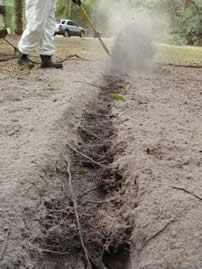
- Posted on

 portance of understanding their root systems. Beneath the surface lies a hidden world where intricate networks of roots support and sustain the magnificent structures that grace our landscapes. Exploratory air spading is a revolutionary method that involves controlled excavation using compressed air to expose a tree’s root system. By directing a powerful stream of air into the ground, the soil is gently blown away, revealing the intricate structure and configuration of the roots.
portance of understanding their root systems. Beneath the surface lies a hidden world where intricate networks of roots support and sustain the magnificent structures that grace our landscapes. Exploratory air spading is a revolutionary method that involves controlled excavation using compressed air to expose a tree’s root system. By directing a powerful stream of air into the ground, the soil is gently blown away, revealing the intricate structure and configuration of the roots.